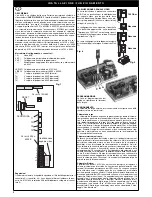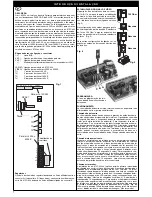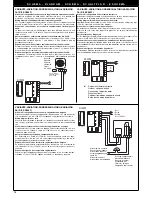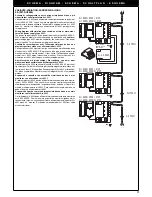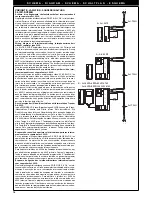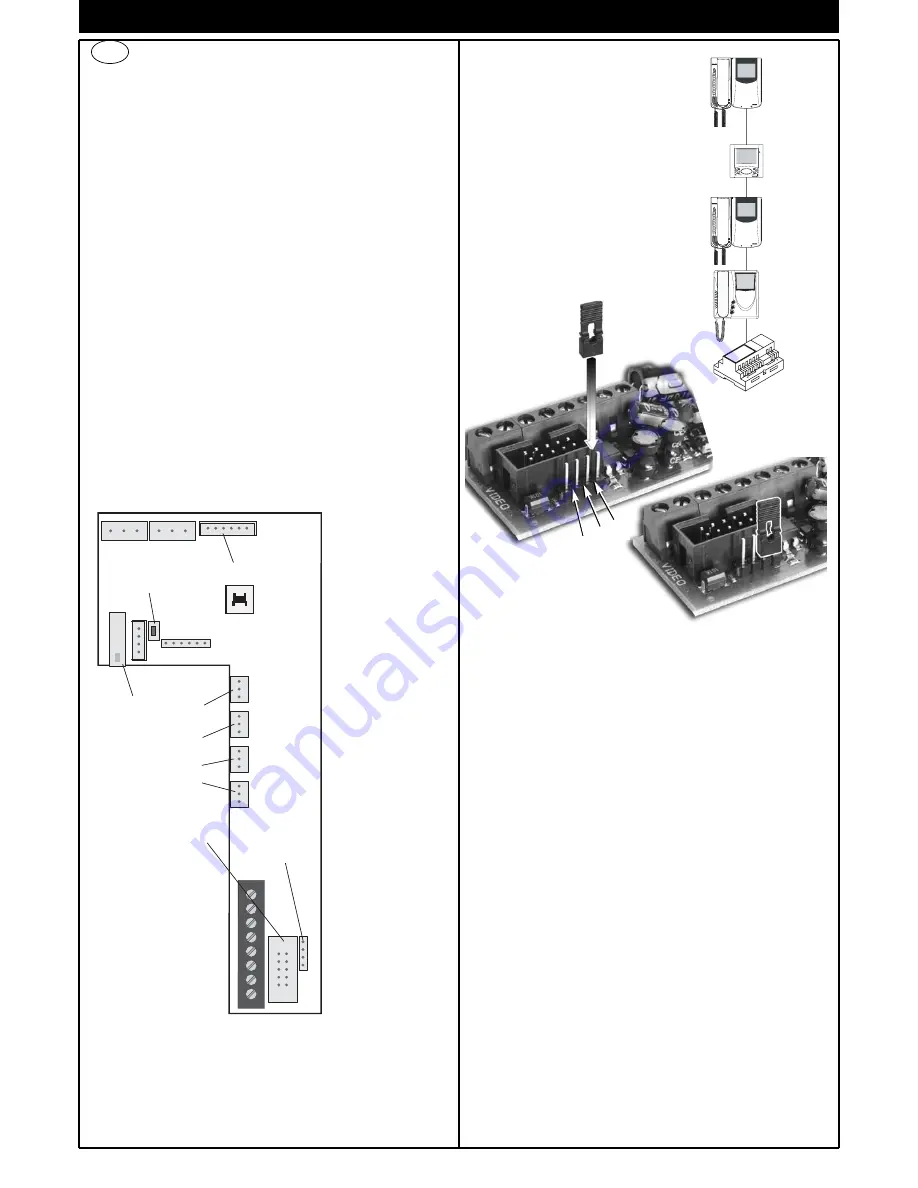
3
DESCRIPTION
Type 6209 is an interphone in the Petrarca series for
ELVOX 2-WIRE
audio and video door entry systems. It is supplied as standard with 3
pushbuttons, one for lock release, one for self-start of the interphone in
the system even when not called, and one for the auxiliary “stair light”
service. The interphone can be fitted with an additional 3 pairs of
pushbutton types 692P (o 692P/M, o 692P/R), for auxiliary services or
intercommunicating calls, and the accessory type 6153/682 for: call volu-
me adjustment, call signal mute, call denied luminous indicators, signal
to indicate unanswered calls, signal to indicate services not available
and luminous signal for gate/door open. The interphone can be installed
as a wall-mounted version or desktop using the conversion kit type 6140
or 6A40, or in combination with monitors in the Petrarca series type 6009
(b/w monitor) or type 6009/C (colour monitor) by means of wall bracket
type 6145 or desktop conversion kit type 6142 or 6A42.
Connection and connector terminal board
1, 2)
BUS line.
4, 6P)
Connection for door call pushbutton.
5, 6S)
Connection of additional door ringtone
-, +)
Additional power supply for monitor with power supply type 6923.
VARIAT.) Connection for module type 6153/682.
VIDEO)
Connection for monitor type 6009 or 6009/C.
T1)
1st pair of pushbuttons type 692P.
T2)
2nd pair of pushbuttons type 692P.
T3)
3rd pair of pushbuttons type 692P.
T4)
4th pair of pushbuttons type 692P.
BL
BI
RO
A+
CA
A-
VARIAT.
SERR.
SERIALE
RESET
PRG.
T1
T2
T3
T4
VIDEO
1
1
2
4
5
6S
6P
-
+
T1
T2
T3
T4
Per art. 6153/682
RESET
SERRATURA
Per art. 6009 o
6009/C
Stabilizzazione
segnale video
Fig. 1
Video signal
stabiliser
GB
Controls
The call volume can be adjusted by moving the loudspeaker wire from
connector A+ (high) to A- (low); otherwise use accessory type 6153/682,
leaving the loudspeaker wire connected to connector A-.
I N S T A L L A T I O N / O P E R A T I N G
Fig. 6
A
C
B
VIDEO SIGNAL STABILISATOR
On the rear of the interphone there is a con-
nector (A-B-C) and a jumper for the video
signal balance. This jumper must be used on
the installations where there are more applian-
ces (interphones or monitors) connected in
series (Fig. 5).
On the standard configuration displace the
jumper into "Terminazione 100 Ohm"
(Termination 100 Ohm) only on the last set and
keep the jumpers on the other appliances in
the initial position "Nessuna terminazione" (No
termination" (Fig. 5).
For the other wiring configurations see wiring
diagrams enclosed with the 2 wire electronic
entrance panels.
Fig. 5
100 Ohm
Nothing
Nothing
Nothing
OPERATION
Calls from an entrance panel, intercommunicating calls and door calls
are differentiated by means of different tones.
Door calls.
Calls from entrance panels do not follow the pressed pushbutton but are
generated inside the interphone. The call interval is 1 second of ringto-
ne and 2 seconds of pause repeated twice (default value set on panel).
To answer, raise the handset. If the handset is already raised during the
call, replace and raise it again. The call answer time (30 s) and the con-
versation time (2 minutes by default) are set in the panel parameters.
When the conversation time has elapsed, the user can continue without
replacing the handset if a new call is made within 10 seconds from the
same panel.
Intercommunicating call.
Lift the handset and press the intercommunicating button for the inter-
phone/monitor to be called. On the handset of the interphone called a
call tone will ring (if the call is enabled) or an engaged tone (if not ena-
bled). On the called interphone the ringtone starts sequentially at inter-
vals of 1 second ringing and 4 seconds pause. The maximum duration
of the call is 30 seconds (6 cycles). To answer the call, simply raise the
handset; the maximum duration of the conversation is 60 seconds.
When the conversation time has elapsed, the user can continue without
replacing the handset if a new call is made within 10 seconds. Calls from
the panel have priority over intercommunicating calls.
Denied calls.
Installation of type 6153/682 in the interphone, enables the user to vary
the call intensity or mute the ringtone. Call mute is indicated by perma-
nent illumination of the red LED. If calls are made to the interphone when
the call mute is enabled, they are denied. A denied call causes the red
Led to briefly switch off according to the number of times calls are denied
(maximum 4 denied calls). The signal is repeated every 10 seconds
(approx.). Deletion of denied calls is by: reenabling the ringtone, reset-
ting the interphone or a system power failure. On the panel, a denied call
is indicated by means of a dissuasion tone (a series of “Beeps” at 100ms
intervals with a pause of 100ms for a total of 5 seconds).
The message “Do not disturb” also appears on panels with display.
PROGRAMMING
The interphone programming
phase is indicated in the panel
instructions.


